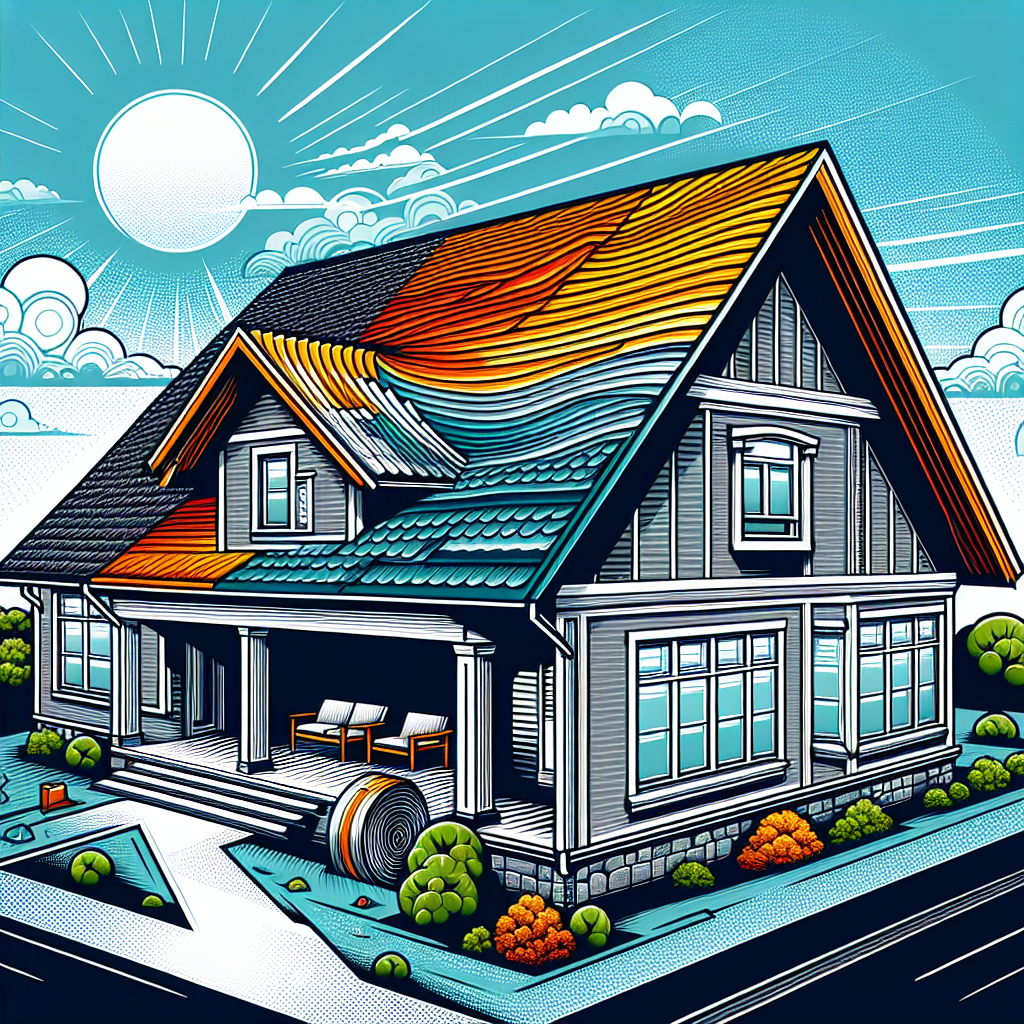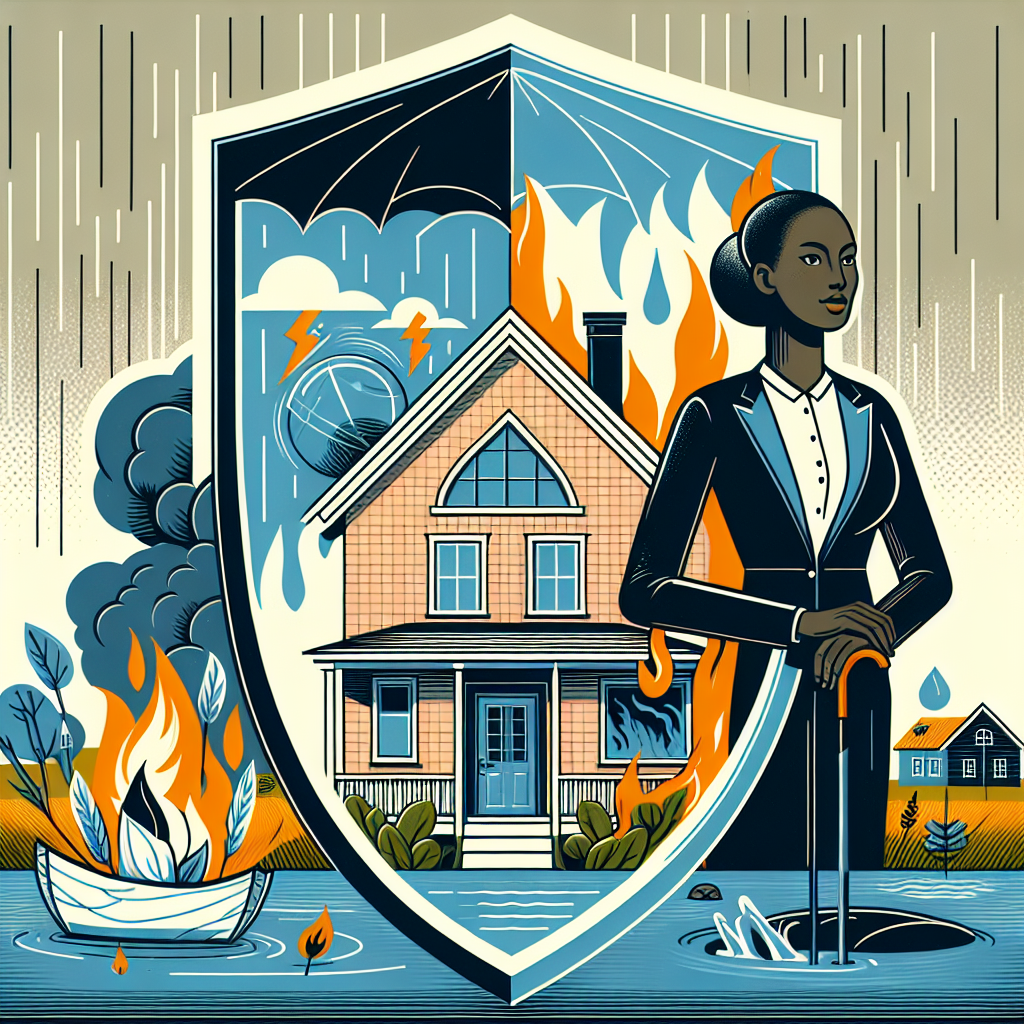Filed under Home Insurance on
Progressive Home Insurance Roof Coverage Explained

Roofs are your home’s first line of defense, yet they’re also one of the most expensive components to repair or replace. That reality makes understanding roof protection under your homeowners policy essential. If you’re insured with Progressive or considering switching, you might be wondering what’s included, what’s excluded, and how claims play out in real life. This guide breaks it all down, translating insurance speak into plain English so you can confidently navigate coverage decisions and claim situations.
Why roof coverage deserves your attention
Extreme weather is hitting harder and more often. The Insurance Information Institute reports that wind and hail are among the most frequent drivers of homeowners claims. Roofs take the brunt of those losses, and insurers across the industry have responded with new deductibles, endorsements, and underwriting rules aimed at controlling costs. Understanding how your policy treats the roof—especially age, material, and peril type—can mean thousands of dollars saved at claim time.
In that context, Progressive home insurance roof coverage is worth a closer look. While specifics vary by state and the company underwriting your policy, there are consistent patterns in how roofs are evaluated, paid for, and repaired after a loss. Let’s start with the basics.
What “roof coverage” means in a homeowners policy
Most standard homeowners policies insure your home’s structure under Dwelling Coverage A. The roof is part of that structure. Typically, HO-3 policies cover the dwelling on an “open perils” basis—meaning any cause of loss is covered unless the policy specifically excludes it. Common exclusions include wear and tear, maintenance issues, and certain cosmetic-only damage.
Key terms that affect roof payouts
- Replacement Cost Value (RCV): Pays the cost to replace the roof with new materials of like kind and quality, up to policy limits, without subtracting depreciation (though you may first receive an Actual Cash Value payment and collect the withheld depreciation after repairs).
- Actual Cash Value (ACV): Pays the depreciated value of your roof, factoring in age and condition. Older roofs often see lower ACV payouts.
- Deductibles: Many policies now carry separate, higher deductibles for wind or hail, and some coastal states use percentage deductibles for hurricanes or named storms.
- Roof Surface Payment Schedule: An endorsement some carriers use that caps payout percentages based on roof age and material, often applying ACV to roof surfaces only.
- Cosmetic Damage Exclusion: Excludes non-functional dings, dents, or marring—common with metal roofs after hail—if there’s no leak or functional impairment.
Progressive home insurance roof coverage is generally tied to these factors, with the exact mechanics shaped by your state regulations and the specific company underwriting your policy through the Progressive network.
What’s typically covered vs. what isn’t
No two claims are identical, but patterns emerge across policies. Here’s how scenarios commonly break down:
Often covered
- Wind and hail that puncture roofing or break shingles, leading to leaks or loss of function.
- Fallen trees or limbs that damage the roof deck or structure.
- Fire, smoke, and lightning, including secondary water damage from fire suppression efforts.
- Weight of ice and snow causing collapse or structural damage (depending on policy form and state).
- Vandalism or accidental direct physical loss.
Often not covered
- Wear, tear, deterioration, or improper installation.
- Age-related granule loss, blistering, or brittleness without a covered peril.
- Cosmetic-only hail damage to metal roofing if excluded by endorsement.
- Mold, rot, or algae from long-term moisture where maintenance could have prevented damage.
- Manufacturer defects or contractor errors (these may fall under warranties, not insurance).
A crucial nuance: If wind rips shingles off and rain subsequently enters, the resulting water damage inside is typically covered—because the wind created an opening. Conversely, slow seepage from aging flashing over months commonly falls under maintenance and is not insurable.
How Progressive and similar carriers approach roofs today
Insurers are recalibrating roof risk amid rising storm severity and inflation in construction costs. Progressive home insurance roof coverage generally reflects industry trends that attempt to align payouts with risk and roof condition.
Trends shaping your roof coverage
- Age matters: Older roofs are more likely to see ACV settlements or roof surface payment schedules, reducing payout compared to full replacement cost.
- Material differentiation: Class 4 impact-resistant shingles, standing seam metal, and tile each behave differently after hail or wind. Policies and discounts increasingly reflect those differences.
- Separate wind/hail deductibles: Common in the hail belt and coastal zones, these can be flat dollar amounts or a percentage of Coverage A.
- Functional vs. cosmetic decisions: Adjusters focus on whether damage impairs the roof’s ability to shed water. Cosmetic-only damage is more often excluded.
- Matching limitations: Some policies cap or exclude replacing undamaged sections solely to achieve a uniform look. Endorsements can modify this.
Because Progressive partners with various underwriting companies, read your declarations and endorsements closely to see if a roof schedule, cosmetic exclusion, or special deductible applies. When in doubt, ask your agent to walk you through the roof-specific language in your policy packet.
Replacement cost vs. actual cash value for roofs
How your roof is valued is one of the most significant drivers of claim outcomes. Here’s what to look for:
Replacement Cost Value (RCV)
- Often the default for newer roofs and many HO-3/HO-5 forms.
- You might receive an initial ACV payment, then recoverable depreciation after proof of completed repairs.
- Requires you to actually repair or replace to access the full amount.
Actual Cash Value (ACV)
- Common for older roofs, certain materials, or when a roof schedule is attached.
- Depreciation can be significant—e.g., a 20-year-old three-tab shingle might see a payout that’s a fraction of replacement cost.
- May apply only to roof surfaces, with other dwelling components still at RCV.
This distinction is vital with Progressive home insurance roof coverage. If your declarations show an ACV endorsement for roof surfaces, ask your agent for examples of how depreciation would apply to your specific roof age and material.
Important endorsements that influence roof claims
- Ordinance or Law Coverage: Pays for code-required upgrades (like ice and water shield, drip edge, or ventilation) when you replace a roof after a covered loss. Without it, you pay those costs out of pocket.
- Matching Coverage: Enhances payment for undamaged sections to maintain visual continuity. Availability varies widely.
- Extended or Guaranteed Replacement Cost: Usually applies to the dwelling limit as a whole, not only the roof, but can help if widespread storm demand causes pricing spikes.
- Water Backup: Separate from roof leaks; covers damage from backed-up sewers or drains. It won’t fix a worn roof, but it can cover interior damage from backups.
- Scheduled Solar Equipment: If you have roof-mounted solar, ask how panels, inverters, and racks are covered, and whether they’re considered part of the dwelling or personal property.
How to read your policy for roof details
Insurance documents can be dense, but roof-specific items are findable with a plan:
- Check the declarations page: Look for special deductibles for wind/hail or named storms, and any endorsements referenced by code.
- Scan endorsements: Search for “roof,” “surfacing,” “schedule,” “cosmetic,” or “matching.”
- Review loss settlement clauses: This section explains whether roofs are paid at RCV or ACV and any conditions for recoverable depreciation.
- Ask for a coverage summary: Agents can provide a plain-language summary of roof treatment in your policy and alternatives available in your state.
Clarity at purchase time helps avoid surprises. With Progressive home insurance roof coverage, you can often choose different deductibles and endorsements to fit your budget and risk tolerance.
The claims process for roof damage, step by step
Act quickly and methodically; documentation is everything.
- Make emergency repairs: Tarp openings and stop active leaks to prevent further damage. Keep receipts; mitigation costs are often reimbursable.
- Document thoroughly: Take photos and video of the roof, attic, ceiling stains, and debris. Capture the date and weather details if possible.
- Notify your insurer: Report the claim promptly through the app, website, or phone. Provide your documentation and describe the event.
- Inspection: An adjuster or approved contractor may inspect in person or via virtual tools. Drones and high-res imagery are increasingly common.
- Estimate and payment: You’ll receive a scope of repairs and an initial payment based on ACV or RCV terms. Review line items carefully.
- Contractor selection: You can generally choose your own licensed roofer or a network contractor. Verify permits, materials, warranty terms, and projected completion dates.
- Supplemental claims: If hidden damage is discovered (e.g., rotten decking), your contractor can submit supplements for approval.
- Recoverable depreciation: If applicable, submit final invoices to receive withheld depreciation and any code-required upgrade payments.
For Progressive home insurance roof coverage, expect modern claim-handling tools and an emphasis on preventing additional damage. If you’re ever unsure about the scope or price, getting a second estimate from a reputable roofer can help you compare.
How roof characteristics affect pricing and coverage
Insurers price risk, not just square footage. Your roof’s attributes have a major influence on premiums and claim outcomes.
Material
- Asphalt shingles: Most common; Class 4 impact-resistant options can earn discounts and better hail performance.
- Metal: Durable, but watch for cosmetic damage exclusions; seams and fasteners are critical to wind performance.
- Tile/slate: High replacement cost; fragile during inspections; underlayment condition is key.
- Wood shake: Attractive but fire risk without mitigation; check for local restrictions and insurance availability.
Age and condition
- Newer roofs are more likely to qualify for RCV and preferred rates.
- Older roofs may still be insurable but with ACV settlements or stricter deductibles.
- Evidence of neglect can jeopardize claims; keep maintenance records.
Design and complexity
- Steeper pitches and multiple facets increase labor and material waste.
- Skylights, chimneys, and solar mounts add flashing points and risk.
- Poor ventilation can shorten shingle life and complicate claims.
Regional realities: hail belt, hurricane coasts, wildfire zones
Where you live shapes how your policy treats the roof.
- Hail-prone areas: Expect wind/hail deductibles and tight definitions of functional damage. Impact-resistant upgrades can be a smart long-term bet.
- Hurricane-prone coasts: Named-storm or hurricane percentage deductibles are the norm. Building codes may require specific underlayments and fasteners—make sure ordinance or law coverage is adequate.
- Snow and ice regions: Ice dam losses can be covered if sudden and accidental, but prevention (insulation, ventilation, and heat cables) reduces risk and disputes.
- Wildfire areas: Ember-resistant vents and Class A roofing improve insurability and may qualify for discounts.
Ways to strengthen your coverage and lower costs
Proactive choices can improve claim outcomes and premiums without overpaying.
- Choose impact-resistant materials: Class 4 shingles or robust metal systems often earn discounts and reduce hail claim disputes.
- Upgrade ventilation and underlayment: Better airflow and ice-and-water shield can prevent future losses and code issues.
- Consider FORTIFIED Roof standards: The Insurance Institute for Business & Home Safety’s FORTIFIED program outlines construction practices that significantly reduce storm damage. Some insurers reward it with lower rates.
- Right-size your deductibles: Higher deductibles can cut premiums, but ensure you can comfortably cover that amount if a storm hits.
- Document your roof: Keep dated photos of a clean, intact roof and invoices for maintenance. Strong pre-loss documentation can streamline claims.
- Ask about endorsements: Matching coverage, ordinance and law limits, and roof-surface settlement terms can often be customized.
Progressive home insurance roof coverage can often accommodate these choices, especially when you work with an agent who understands your roof type and local hazards.
Solar panels, skylights, and roof-mounted equipment
Modern homes often integrate features that complicate roof claims. Clarify these before a loss:
- Solar arrays: Confirm whether the panels are covered under dwelling or personal property, how hail/wind applies, and whether disconnection/reinstallation is included in estimates.
- Skylights: Ensure replacements match impact ratings and flashing details; some older skylights no longer meet code.
- HVAC and satellite mounts: Penetrations require proper flashing; faulty installs can lead to maintenance denials.
- Green roofs: Specialized membranes and plantings often need expert assessment. Coverage may hinge on policy endorsements and local code requirements.
Common pitfalls and how to avoid them
- Assuming full replacement without checking endorsements: A roof surface payment schedule can reduce payout dramatically for older roofs.
- Delaying mitigation: Waiting to tarp can turn a clean claim into a denial for “neglect to protect property.”
- Choosing the cheapest estimate: Incomplete scopes miss code upgrades and tear-off costs, leading to out-of-pocket surprises.
- Ignoring matching: If uniform appearance matters, ask about matching coverage or local statutes that affect replacement of undamaged sections.
- Not verifying materials: Ensure your estimate specifies the exact shingle type and impact rating you expect.
Real-world example
A spring hailstorm hits a 12-year-old home with architectural shingles. The homeowner notes granule loss and dents on gutters but only minor shingle bruising. The adjuster finds functional damage on three slopes and signs of prior wear around a chimney. Because the policy includes a wind/hail deductible and a cosmetic damage exclusion, gutters aren’t covered, but the three damaged slopes are approved for replacement. The remaining slope is addressed under a local matching statute, and ordinance and law coverage pays for added ice-and-water shield required by current code. The claim is settled at RCV with depreciation recoverable upon completion. The homeowner upgrades to Class 4 shingles, earning a premium discount and reducing risk next season.
Costs and timelines: what to expect
Roof replacements vary widely by material, size, and market demand. After major storms, labor and materials may spike for weeks or months. Expect:
- Inspection within several days to two weeks depending on surge demand.
- Initial ACV payment soon after scope approval; RCV balance after completion and invoice.
- Project durations from a day or two (asphalt) to a week or more (tile/metal), weather permitting.
- Potential permitting delays in municipalities with heavy storm damage.
To keep things moving, line up your contractor early, confirm lead times for special-order materials, and ask your adjuster about any required supplements before work begins.
Checklist: preparing your roof before storm season
- Schedule a licensed contractor to inspect flashing, vents, ridge caps, and seals.
- Clean gutters and downspouts; verify downspouts discharge away from the foundation.
- Trim branches away from the roof and secure loose yard items that could become projectiles.
- Photograph the roof and exterior under good lighting for baseline documentation.
- Review your policy for wind/hail deductibles, roof valuation (RCV vs. ACV), and matching or cosmetic exclusions.
- Store your agent’s contact and claim reporting info in your phone.
Frequently asked questions
Does insurance pay for a roof that’s just old?
No. Age alone isn’t a covered peril. Insurance addresses sudden, accidental damage from covered causes like wind, hail, or fire. Routine replacement due to age is a homeowner expense.
Can I choose my own roofer?
Typically yes, as long as they are licensed and meet insurer requirements. Network contractors can simplify scheduling and billing, but you generally aren’t required to use them.
What if only part of my roof is damaged?
Insurers pay to repair or replace the damaged portion. Whether undamaged sections are replaced for appearance depends on policy language, endorsements, and, in some areas, state statutes about “line of sight” matching.
How does depreciation work?
For ACV or RCV with recoverable depreciation, the insurer calculates the roof’s age and expected life to determine depreciation. You receive the ACV up front and the remaining depreciation after you complete repairs and submit invoices, if your policy allows for recovery.
Are leaks always covered?
No. Leaks from sudden events (like wind-created openings) are often covered. Leaks from long-term wear, failed flashing, or poor maintenance are typically excluded.
Are solar panels covered if hail hits?
Often yes, but treatment varies by policy. Confirm whether they’re covered as part of the dwelling or personal property and whether any special deductibles apply.
How to talk to your agent about your roof
Have a focused conversation to tailor your policy:
- What valuation applies to my roof surfaces—RCV or ACV?
- Do I have a roof surface payment schedule or cosmetic damage exclusion?
- What’s my wind/hail or named-storm deductible, and is it a percentage or flat amount?
- What are my ordinance and law limits, and are they adequate for local building codes?
- Can I add matching coverage or increase limits that affect roof replacements?
- Do I qualify for an impact-resistant roof discount if I upgrade?
These questions make Progressive home insurance roof coverage more transparent and help you fine-tune protections before a storm hits.
Bottom line: protect your investment with clear expectations
Your roof is a major asset and a critical shield against the elements. Policies are evolving to keep pace with weather risks and construction costs, and that means details matter—roof age, materials, valuation method, and deductibles can dramatically change claim outcomes. By reviewing your endorsements, documenting your roof’s condition, and aligning upgrades with available discounts and standards, you can reduce surprises and out-of-pocket costs.
If you have questions about Progressive home insurance roof coverage, start with your declarations, then speak with your agent to clarify how your specific roof is valued and settled in your state. With the right information and a proactive plan, you can balance premium savings with robust protection and be ready for whatever the sky brings.





